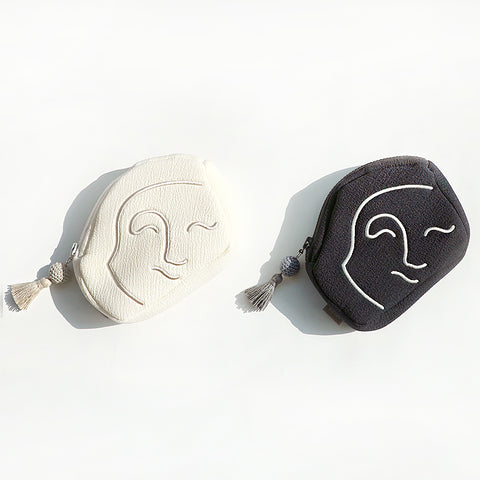
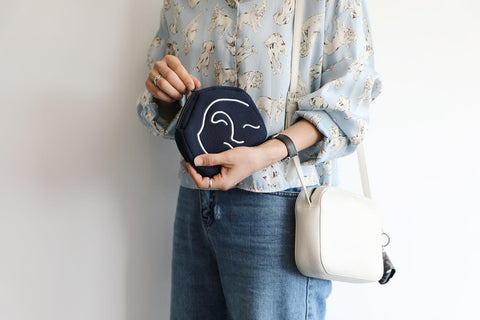
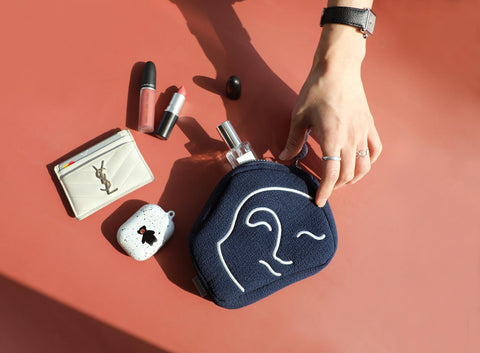
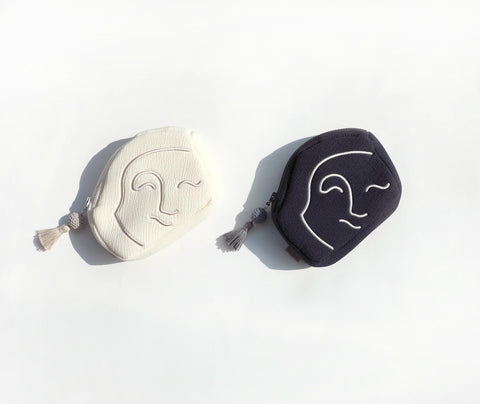
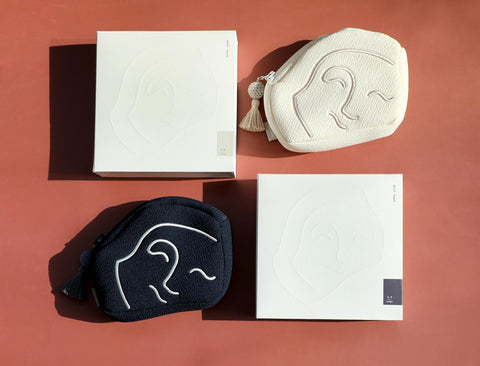
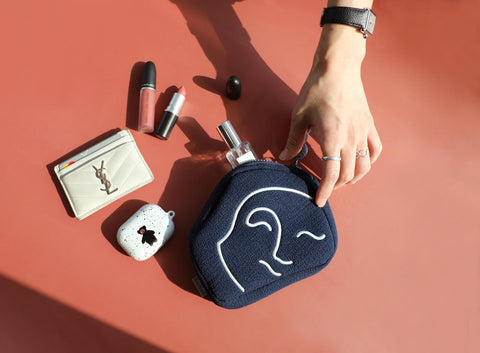
The Smile of Silla Pouch
The Smile of Silla Pouch
Product : 160*170*40mm
Package : 170x170x45mm
Weight : 80g(90g)
Concept
This product incorporating the popular Roof-end Tile with Human Face Design in the collection of the Gyeongju National Museum was designed for everyday convenience. Known as the “smile from Silla,” the roof-end tile featuring a serene yet cheerful grin is one of Gyeongju’s most beloved cultural remnants. This product inspired by a roof-end tile conveying warmth and comfort aims to bring the smile of Silla into daily life to spread joy and positivity.
Features
This pouch features the radiant smile of the Roof-end Tile with Human Face Design. The cheerful grin is embroidered as part of a thick, textured design complemented by a decorative ring that enhances its playful charm. The soft, quilted material is lightweight and offers a plush feel. To ensure that the durability and form of the artifact are well represented, the pouch is reinforced with a sturdy lining and padding. It is a practical size perfect for storing everyday essentials like cosmetics and personal items.
Let the delightful grin of the Smile from Silla Pouch brighten your daily life.
Usage Precautions
· When opening and closing the pouch, hold the zipper pull and avoid tugging on the decorative attachment.
· Spot clean only when needed. Hand wash with lukewarm water and a mild detergent then gently shake off excess water and air dry in a shaded area.
Relic
The Roof-end Tile with Human Face Motif, also known by its nickname, Silla smile, was discovered in Sajeong-ri (present-day Sajeong-dong) in Gyeongju in the early twentieth century. The ornamental tile was introduced to academic circles after a Japanese collector named Tanaka Toshinobu purchased it at an antique shop in 1934. The tile was smuggled to Japan sometime after the purchase, and was not repatriated to Korea until October 1972.
Unlike other ordinary tiles, which were made using tile molds (wabeom), this tile was made by shaping the desired form by hand and then finishing it with tools. The details of the face suggest that it is the work of an experienced craftsman, while the tile itself shows traces of use. Although the tile is partly damaged, the details of the face - including the clearly defined eyebrows, nicely raised nose and gentle smile lines around the eyes and mouth - have been preserved, reflecting the Silla people’s aspiration for a utopian world.
The tile is the only known ornamental roof-end tile made in Korea to have been made by hand, and is regarded as a valuable part of the Korean cultural heritage reflecting the humble, humane life of the common people of Silla and excellence in the tile making .

